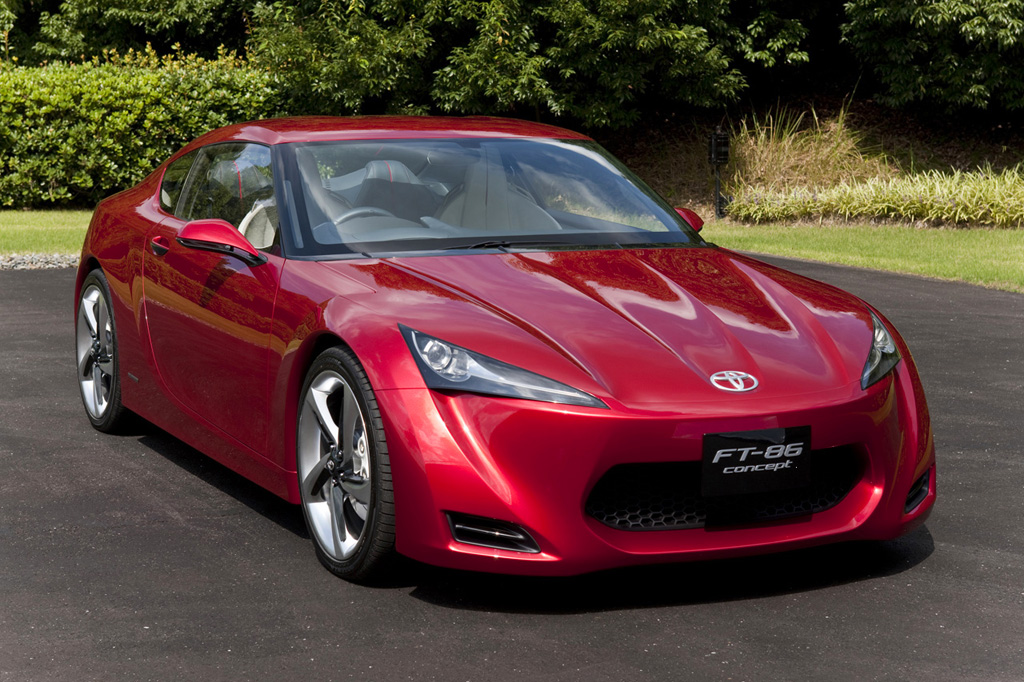The iconic twins

The concept. Source: supercars.net
2 cars that immediately earned everyone’s love. Incredibly small, incredibly powerful.
Co-operation idea
Toyota was actually the one to introduce this idea to Subaru. Toyota recognized the need for a compact, sports car in their lineup. Toyota used Subaru’s knowledge in boxer engines and developed what is now considered one of the best starter cars for racing. It all started with a prototype, called „FT-86“ (that’s where the name „GT-86“ is from). Subary had a name for this car as well. It was named „Subaru 0846“, which is nothing close to „BRZ“ (meaning 3 things: Boxer engine, RWD and Zenith), or, what we have now.

The twins. Left photo - Subaru BRZ. Source: carbuzz.com, right photo - Toyota GT-86. Source: toyota.co.uk
Same car, different branding
Both car manufacturers made (almost) the same car, but branded it under a different name. Just look at them! See any major differences on the outside? But „Don’t judge a book by its cover.“ On the inside they’re completely different. Different cockpit, seats, technologies and bunch of other stuff that each manufacturer made by themselves. Probably the only thing they collaborated with, was the body and the engine.
What’s the point?
And this seems great, but you might be asking: why? Why would Toyota share their idea with Subaru? Well:
- It was cost efficient for Toyota. Creating it from scratch would cost much more. Collaborating with Subaru meant that the most expensive part (or, as you all know, the engine) was already done. Toyota saw this and used it.
- Subaru’s Reputation for Performance. Subaru had built a strong reputation for producing performance-oriented vehicles, particularly with their WRX/STI models. Toyota saw Subaru as a suitable partner to help create a sports car that would deliver engaging driving dynamics and performance.
1
2
3
4
5
6
7
8
9
10
11
12
13
| ------------------------- | ------------------------ | ----------------- |
| Specification | Concept | Production |
| ------------------------- | ------------------------ | ----------------- |
| Engine type | Gas | Gas |
| Transmission | 6 speed automatic/manual | 6 speed automatic |
| Drive type | Rear-wheel drive | Rear-wheel drive |
| Acceleration (0-100 km/h) | 6.7 s | 7.1 s |
| Max speed | 219 km/h | 226 km/h |
| Fuel type | Premium gasoline | Premium gasoline |
| Engine size | 2.0 L | 2.0 L |
| Horsepower | 200 | 200 |
| Range | Up to 637 km | Up to 595 km |
| ------------------------- | ------------------------ | ----------------- |
The specs haven’t changed much over time. The concept carried not only the design, but the specs as well.
My rating
The concept was already pretty close to the final product. There wasn’t much to change. Overall, I really like this car with its compact and sporty look, as well as feel. No doubt it’s considered one of the best starter racing cars. But judging from the transformation, I’ll rate this 3.5 stars, because Toyota already delivered a stable prototype, but I expected bigger changes in design.